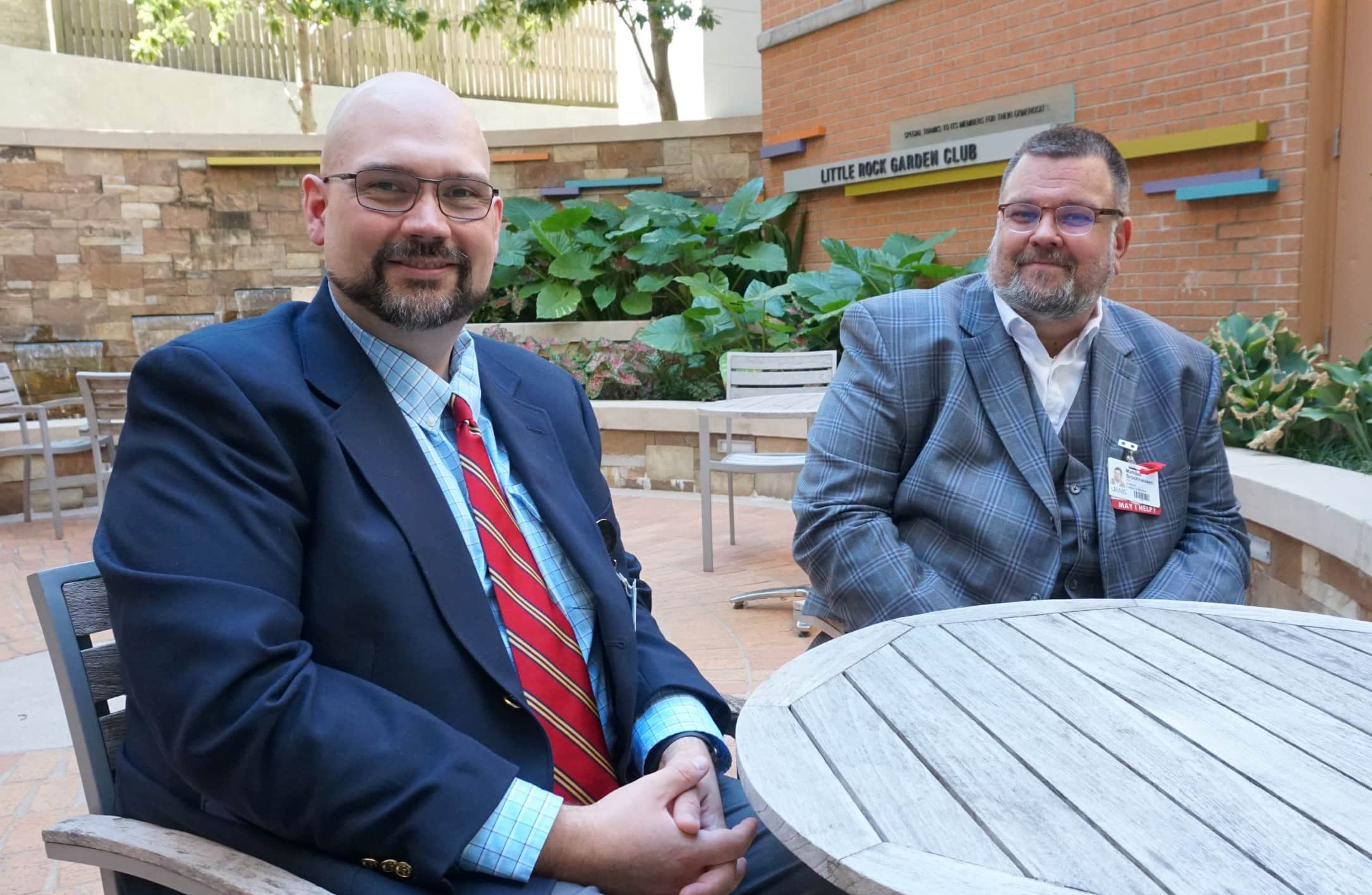NIH Funds UAMS Effort to Close Patient Outcome Gaps Across U.S. Level 1 and 2 Trauma Centers
| LITTLE ROCK — University of Arkansas for Medical Sciences (UAMS) researchers are hoping to help close wide gaps in trauma patient outcomes across the United States by harnessing new data to help trauma center leaders improve outcomes.
Led by Mathias Brochhausen, Ph.D., and Kevin Sexton, M.D., the researchers will test which organizational features affect patient outcomes at 230 Level 1 and Level 2 trauma centers. They are also creating innovative computer-based tools to help institutions apply the information to their specific trauma centers.
A four-year, $1.8 million grant from the National Institute of General Medical Sciences (NIGMS) of the National Institutes of Health (NIH) is funding the project.
“The substantial variability we’ve found in trauma patient outcomes is surprising because these trauma centers offer the same clinical specialties and services,” said Brochhausen, a professor in the College of Medicine Department of Biomedical Informatics.
As the researchers collect data each year from the trauma centers, it will be incorporated into new computer-based interactive visualization tools developed by the team. With its simple user interface, trauma center leaders and managers will be able to compare their organizational structures and trauma patient outcomes with other centers across the U.S.
The award is a renewal of a prior six-year, $1.3 million NIH-NIGMS grant, which the research team used to prepare for the current project.
“This award is a dream come true because we can really reap the benefits of our prior work,” Brochhausen said. “We can link this to patient outcome data and really help institutions have a completely new perspective on their organizational structures.”
No definitive link has been established between organizational structures and trauma patient outcomes, but the UAMS team has found connections. For example, it looked at national data on acute kidney injury and found better patient outcomes at Level 1 trauma centers compared to Level 2 trauma centers. The only difference between the two is that Level 1 centers are run by academic institutions like UAMS, while Level 2 trauma centers do not have a research component.
The striking difference led to the team’s hypothesis that variability of organizational features in Level 1 and Level 2 trauma centers is a significant factor in the variability of patient outcomes across those trauma centers.
UAMS is Arkansas’ only Level 1 trauma center as designated by the American College of Surgeons, signifying UAMS can provide the highest level of trauma care for the most serious and urgent cases. Nationally, trauma is the leading cause of death for people under age 45.
The research project builds on the team’s previous analysis of national trauma center data from a recently concluded four-year study in collaboration with the American College of Surgeons. The research team will examine which of 40 organizational features are likely to influence patient mortality, length of stay and major complications. By testing these potential correlations over time, the researchers will be able to identify the most important organizational changes needed for the best patient outcomes.
“We will develop a comprehensive picture of the environment that patient is in,” said Sexton, an associate professor in the College of Medicine Department of Surgery and president of BioVentures LLC at UAMS. “It’s a strong example of translational research because we will be providing actionable information directly from the patient’s bedside, which is very likely to translate to improved outcomes.”
Ronald Robertson, M.D., professor and chair of the Department of Surgery at UAMS, said he is excited about the potential of the team’s work.
“I can tell you from experience that this information would be highly desirable and directly inform change at UAMS,” said Robertson, the UAMS trauma medical director since 2013. “What they are creating is new to our field and will be a fundamental resource that eventually will allow us to compare our institution to another with the preferred clinical outcome.”
This research is supported by NIGMS R01GM111324. The content is solely the responsibility of the authors and does not necessarily represent the official views of the National Institutes of Health.
Sexton and Brochhausen also receive support for their work from the UAMS Translational Research Institute, which is funded by the NIH National Center for Advancing Translational Sciences, Clinical and Translational Science Award UL1 TR003107.
UAMS is the state’s only health sciences university, with colleges of Medicine, Nursing, Pharmacy, Health Professions and Public Health; a graduate school; a hospital; a main campus in Little Rock; a Northwest Arkansas regional campus in Fayetteville; a statewide network of regional campuses; and eight institutes: the Winthrop P. Rockefeller Cancer Institute, Jackson T. Stephens Spine & Neurosciences Institute, Harvey & Bernice Jones Eye Institute, Psychiatric Research Institute, Donald W. Reynolds Institute on Aging, Translational Research Institute, Institute for Digital Health & Innovation and the Institute for Community Health Innovation. UAMS includes UAMS Health, a statewide health system that encompasses all of UAMS’ clinical enterprise. UAMS is the only adult Level 1 trauma center in the state. UAMS has 3,275 students, 890 medical residents and fellows, and five dental residents. It is the state’s largest public employer with more than 12,000 employees, including 1,200 physicians who provide care to patients at UAMS, its regional campuses, Arkansas Children’s, the VA Medical Center and Baptist Health. Visit www.uams.edu or uamshealth.com. Find us on Facebook, X (formerly Twitter), YouTube or Instagram.###
